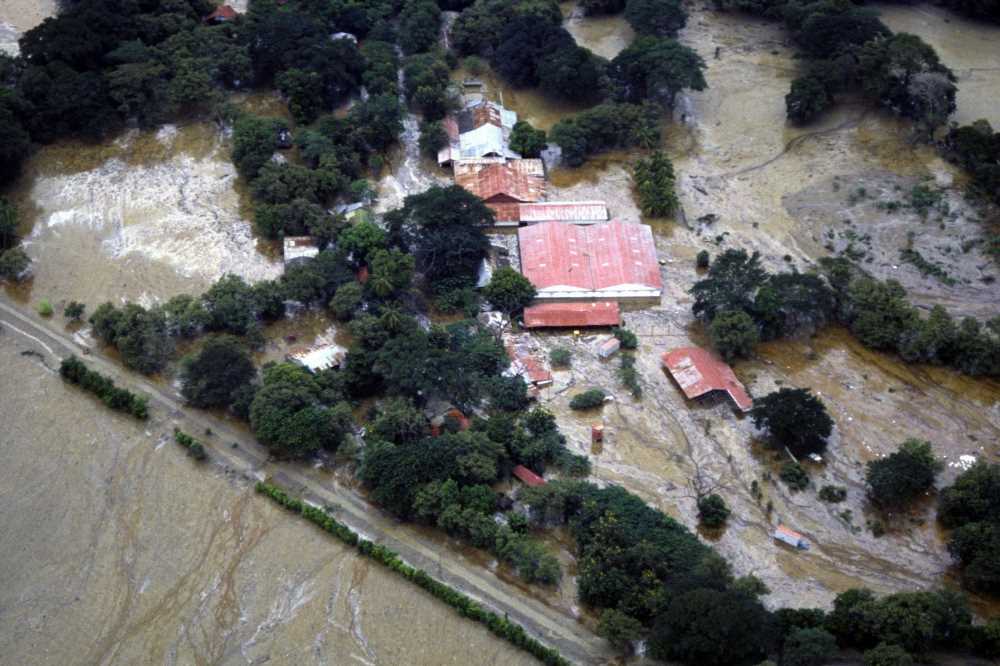A DEVASTATING volcano eruption in Colombia left more than 20,000 residents dead as mudflows flooded a town in the middle of the night, engulfing everything in its path.
The natural disaster, known as the Armero Tragedy, is considered the fourth deadliest volcanic event recorded since 1500.
On November 13, 1985, the Nevado del Ruiz volcano in Tolima, Colombia, erupted after laying dormant for 69 years.
The explosion sent four enormous lahars – volcanically induced mudflows, landslides, and debris flows – down its slopes after the spews of molten lava melted the mountain's glaciers.
The deadly lahars rapidly picked up speed and eventually swept through the town of Armero, taking the lives of more than 20,000 of its almost 29,000 residents.
Rescue efforts were hindered due to the thickness of the mud after it caked the town – making it nearly impossible to move through without becoming stuck.
READ MORE ON GHOST TOWNS

Our once-thriving high street is now a ghost town – it makes me want to cry

How London could become ghost town after rise of work-from-home culture
By the time relief workers reached the town twelve hours after the eruption, many of the victims with serious injuries were already dead.
The landscape of the once-bustling South American town was littered with fallen trees, human corpses, and enormous piles of debris from what were once homes.
According to reports, the catastrophic disaster could have been avoided, had prior warnings not been ignored.
Marta Lucía Calvache Velasco, the technical director of the Colombian Geological Service (SGC), was studying the volcano just one month before the eruption.
Most read in The Sun

Israel orders TOTAL blockade on Gaza banning food – with invasion ‘hours away’

Horror aftermath of Hamas festival attack that killed 260 – as deaths hit 1,000

Olly Murs lands huge new ITV talent show role after he was axed from The Voice

Last message from missing Brit after Hamas gunmen ‘kill 260’ at festival
She and her colleagues had submitted a report to the Colombian Congress describing the history of the site and warned that an eruption was likely to occur within the coming months and years.
On the day of the tragedy, several evacuation attempts were made but a severe storm restricted communications.
Many victims stayed in their houses as they had been instructed to, under the impression that the eruption had ended.
But in a chilling turn of events, many believe the noise from the storm may have prevented many from hearing the sounds of the eruption – until it was too late.
The first lahar hit the town at 11:30pm during what survivors of the Armero Tragedy called a "quiet night".
Formed of ice, water, pumice, and other volcanic rock, the waves of mudflows swept through Armero while flipping cars, crushing people, and collapsing buildings.
All four lahars lasted over three hours, by which point 85 per cent of the town was enveloped in mud.
Survivors described people clinging to debris from their homes in an effort to stay above the thick mud.
The front of the lahar contained boulders and cobbles that would have crushed anyone in its path, while the slower parts were dotted with sharp stones that caused lacerations.
The mud then moved into open wounds and other body parts such as the eyes, ears, and mouth, causing suffocation to those buried in it within minutes.
A total of 13 towns and villages were completely destroyed during the eruption.
In the aftermath of the tragedy, a 13-year-old girl became the enduring image of the tragic relief operation.
Omayra Sanchez had become trapped up to her neck in water, and pinned down by the debris of her house.
After tiresome efforts were made to rescue her, it was discovered that her legs were bent under concrete.
Local doctors lacked the surgical equipment required to amputate her legs and decided the most humane thing to do was let her die.
Sánchez died on November 16, three days after the lahars hit Armero.
Following the devastating natural disaster, Armaro was never rebuilt and the survivors were relocated to the towns of Guayabal and Lerida, rendering Armero a ghost town.
Recent images of Armero show destroyed buildings overgrown in brambles and blackened walls covered in graffiti.
Vehicles are scarce in the abandoned streets, and houses have been left windowless after being torn out by the flood.
The entire town has been left to the elements, and lower stories of buildings remain buried beneath the ground with only upper levels visible to those who explore the desolate town.
To commemorate the tragedy, a tall white cross stands in the middle of a patch of destruction, and another large memorial surrounds it.
One adventurer who explored the "somber site" in 2019, said: "Many crosses, grave markers and signs can be seen; I suspect that most of the bodies were not actually recovered and are buried in place.
"Armero is not a typical tourist attraction but is definitely worth a visit to honor the lives lost.
"It serves as a painful reminder of the consequences of insufficient communication and lack of preparation".
It comes as two villages were left to rot for decades after locals were forced to flee 80 years ago.
Residents of Imber and Tyneham were ordered to evacuate in 1943 as Salisbury Plain was taken over by troops preparing for D-Day.
Read More on The Sun

Strictly fans break down in tears at emotional opening number from pros

Big Brother’s Craig Coates unrecognisable 18yrs on from the show
A Siberian city was also almost completely taken off the map after a mine explosion forced its residents to abandon it.
The ruins of Kadykchan now haunt the landscape of Russia's Far East – frozen in time since the Cold War.
Source: Read Full Article








